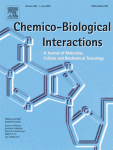|
Autors/es
De Alkimin, Gilberto Dias; Nunes, Bruno; Soares, Amadeu M.V.M.; Bellot, Marina ; Gómez-Canela, Cristian ; Gómez-Canela, Cristian ; Barata, Carlos ; Barata, Carlos
|
Abstract
To avoid being preyed, organisms must be able to identify predatory threats by sensing molecules released by predators (kairomones), and to employ effective strategies to prevent detection by predators. Furthermore, in the wild, organisms are also exposed to chemicals that may alter their behavioral traits, such as neuroactive pharmaceuticals. Considering the co-occurrence of both types of chemicals, their possible interaction needs to be studied. To address this topic, the aim of this study was to verify the effects of fish kairomone (FK – a chemical associated to putative predation by fish) and chlorpromazine (CPZ - neuroactive pharmaceutical drug, environmental contaminant), isolated and in combination, in different functional endpoints of Daphnia magna, such as oxygen consumption, feeding rate, behavior and reproduction. Among these endpoints, oxygen consumption was only affected by the combination of compounds (FK + CPZ). On the other hand, feeding rate was affected by all treatments, being lower than control. For life history traits and phototactic behavior, the effects of FK predominated over the ones caused by CPZ exposure, incrementing the reproductive output of females, leading to greater population growth rates and increasing negative phototactic behaviour.
|

WoS
Scopus
Altmetrics
  
|
